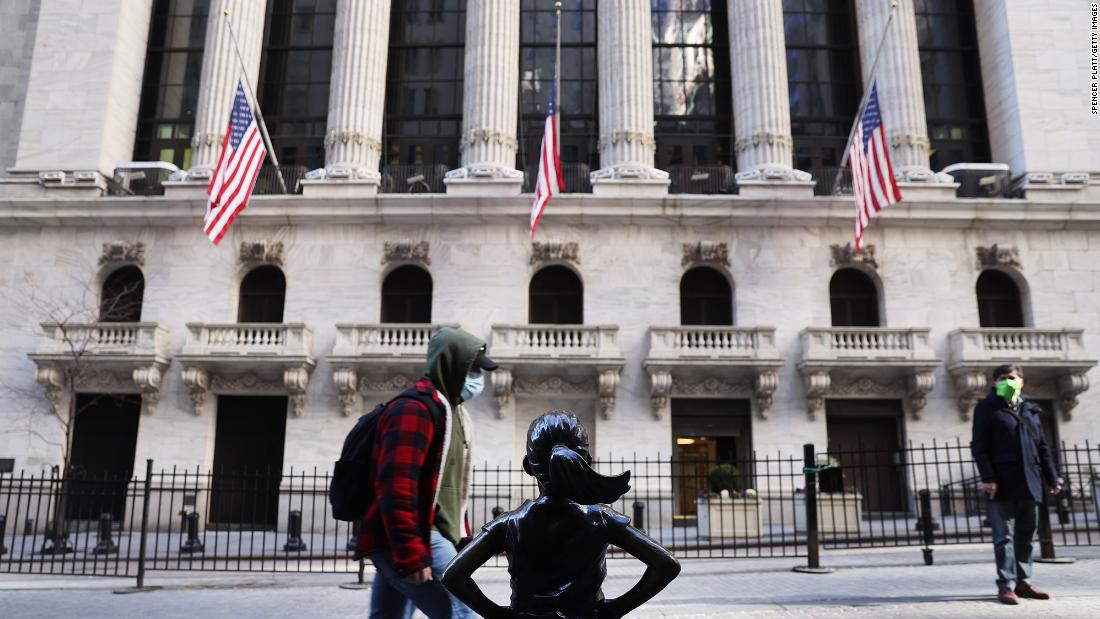For the first time since February 2020, Covid-19 is no longer the number one fear among portfolio managers surveyed by Bank of America, the bank said on Tuesday.
The findings underscore how the situation has changed dramatically over the past year. Confidence is growing because of the launch of vaccines, easing health security restrictions and unprecedented support from the federal government.
“Investor sentiment [is] unequivocally optimistic, “Bank of America strategists wrote in Tuesday’s report.
US stocks recovered quickly from the pandemic. The Dow Jones index hit a low of 18,592 on March 23. The index has gone up a staggering 77% since then. Nasdaq doubled in that period.
The hottest economy in decades
Economists are also very optimistic, especially since Uncle Sam is providing far more support for the economy than many thought it would be just a few months ago. Last week, Congress approved President Joe Biden’s $ 1.9 trillion US bailout package.
Almost half (48%) of the fund managers consulted by Bank of America now expect a V-shaped recovery, compared to just 10% that they predicted in May 2020.
A record 91% of sophisticated investors expect a stronger economy, surpassing the confidence signaled after Trump’s tax cuts were approved in late 2017 and during the early stages of the Great Recession’s recovery.
Fear of inflation increases. But are they exaggerated?
But all this optimism – in addition to the unprecedented stimulus from Congress and the Fed – is leaving some on Wall Street concerned that the economy will overheat.
The big fear is that the resurgence of inflation will cause the Federal Reserve to raise interest rates quickly, causing a short circuit in the economic recovery and the market boom. It happened in the 1970s and early 1980s, when the central bank led by Paul Volcker controlled inflation with aggressive increases in interest rates.
A record 93% of fund managers expect higher global inflation in the next 12 months, according to Bank of America. That is more than 85% of those who said this in February.
However, American officials have resisted fears of inflation. Over the weekend, Treasury Secretary Janet Yellen said inflation could rise, but only temporarily.
Ed Yardeni, president of investment consultancy Yardeni Research, is not too concerned about rampant inflation because about 10 million American workers are still unemployed due to the pandemic.
“A 1970s-style wage and price spiral is now unlikely, in our view, despite our government’s fiscal and monetary excesses,” wrote Yardeni in a note to clients on Tuesday.
The tipping point for bond yields
A related risk is a repeat of the 2013 crisis crisis, when Treasury yields skyrocketed after the Fed signaled it would gradually reduce bond purchases as the economy recovered. Higher Treasury rates may make stocks look less attractive in comparison.
After dropping to 0.3% last spring, the 10-year Treasury rate recently rose to 1.6%. The rise in yields has upset investors, taking U.S. stocks to a sharp drop before they recover.
So how high would yields have to go up to make the bull market unviable?
Bank of America said 2% of the 10-year Treasury “may be the level of stock valuation”. Nearly half of the fund managers surveyed said that 2% yields would cause a 10% correction in stocks. Likewise, about half of investors indicated that a 10-year treasury fee of 2% or 2.5% would make bonds attractive to stocks.
However, professional investors do not see a bubble, at least not yet. Only 15% of investors think the US stock market is in a bubble, according to the Bank of America survey. A quarter say the stock market is at an early bullish stage, while 55% say it is at an advanced bullish stage.
